This past weekend we spent off-site in the city of Tours for orientation. One of our principal occupations there was visiting the magnificent châteaux in the area. For any whose history or French is a few centuries out of date, a château is a French castle. However, they are not very much like the fortified military castles that come to mind for most of us. In fact, they are more like palaces, or huge manor estates.
We saw four of these incredible sites, of which the two most well known are Chambord and Chenonceau. Chambord is a vast, stunning estate with innumerable towers sprouting from its huge profile. To complement its mind-boggling size are its huge grounds which are so expansive that they are now considered a national park. We spent hours simply walking around the building, all contained in the floor plan pictured.
The next day, we saw Chenonceau. Because building châteaux on dry land is boring, Chenonceau was built on a river. When people say their cabin is on a lake, they mean that their property touches the lake. When I say that Chenonceau is on a river, I mean that if you fall out of the window, you will land in the river. One door opens on one bank, and the other opens on the opposite bank. Connected to the main building are two breathtaking gardens surrounded completely by water.
Yet, it is a terrible beauty that surrounds these majestic landmarks. I’m not being ironic, or playing with words: as national monuments, these châteaux occupy a place kind of like a beautiful Auschwitz. No, these were not the locations of systematic murders. There are no gas chambers at Chenonceau, and no lists of victims at Chambord. In a way, they are worse. They are the very peak of privilege, grandeur, and riches which rose up due to a society that systematically trampled on the lower classes—but they are made to look gentle and beautiful. At least Auschwitz doesn’t pretend. These châteaux are where the beneficiaries of injustice took their leave of the world that their existence crushed. They represent a kind of oppression just as the concentration camps of Germany do, but they are covered in flowers, oil paintings, and ornately designed wood. They are made to look nice, while the mess was taken elsewhere.
Unfortunately, there are more examples of this kind of social mess-removal. We live in a world whose consequences are constantly removed from our actions. For example, when we buy bottled water, we do not see the problems it causes, the local people deprived of water, or the havoc to the environment caused by the plastic and the bottle. These are not injustices that we can easily experience. That water has been cleaned up. It is as the Châteaux: a luxury, and a comfort; dressed up, with those it harms kept far away.
- Chambord
- The plans for Chambord
- This is the small staircase indicated in small triangles on the inside, upper, left corner of the courtyard in the plans
- The Chambord central staircase
- A Fleur-de-lis on a door at Chambord
- A room at Chambord
- River view of Chenonceau
- Don’t fall out of this window
- One of the gardens at Chenonceau
- Me, looking out of the window in the gallery of Chenonceau
- Beautiful woodwork at Chenonceau
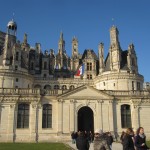
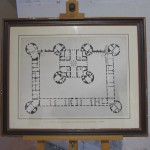
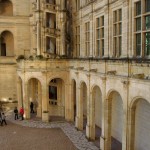
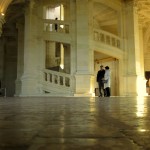
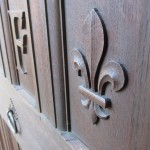



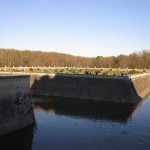
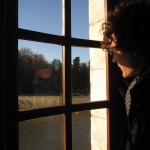
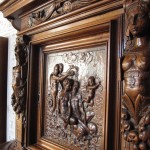
And so the complexities begin (or continue, as it were…) How do you reconcile all of this? What is your (our) responsibility? Be well, be thoughtful, as I know you will, and thanks for continuing to share your journey and your questions with us.
That kind of tihkning shows you’re on top of your game